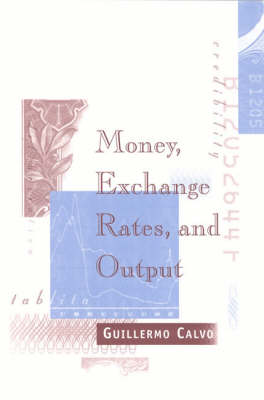The MIT Press
2 total works
Guillermo Calvo, who foresaw the financial crisis that followed the devaluation of Mexico's peso, has spent much of his career thinking beyond the conventional wisdom. In a quiet and understated way, Calvo has made seminal contributions to several major research areas in macroeconomics, particularly monetary policy, exchange rates, public debt, and stabilization in Latin America and post-communist countries. Money, Exchange Rates, and Output brings together these contributions in a broad selection of the author's work over the past two decades. There are introductions to each section, and an introduction to the entire collection that outlines the connections throughout and surveys the current state of macroeconomic theory. Calvo, an advocate of the "Chicago school" of rational expectations, uses elements of this approach to understand economic development. While he is a top macroeconomics theorist, his models are always intertwined with policy discussion. He pushes readers to combine knowledge of real world facts-of institutions, traditions, and culture, in addition to statistics - with theory. One focus of this collection is on the role of credibility in policy-making. Calvo analyzes the origins and macroeconomic consequences of credibility problems. He also shows how monetary and trade theory can fail when the public does not fully believe in policy announcements. A second focus is on equilibrium multiplicity. Calvo uses models with multiple equilibria to identify factors that cause anomalous behavior. He discusses multiple equilibria in abstract terms as well as in terms of its relevance to understanding domestic public debt. Specific issues covered are predetermined exchange rates, currency substitution, domestic public debt and seigniorage, and stabilizing transition economies.
Since the mid-1990s, emerging market economies have been hit by dramatic highs and lows: lifted by large capital inflows, then plunged into chaos by constrained credit and out-of-control exchange rates. The conventional wisdom about such crises is strongly influenced by the experience of advanced economies. In Emerging Capital Markets in Turmoil, Guillermo Calvo examines these issues instead from the perspective of emerging market economies themselves, taking into account the limitations and vulnerabilities these economies confront. A succession of crises-Mexico in 1994-5, East Asia in 1997, Russia in 1998, and Argentina in 2001-prompted an urgent search in economic policy circles for cogent explanations. Calvo begins by laying the groundwork for a new approach to these issues. In the theoretical chapters that follow, he argues that financial crisis theory regarding emerging markets has progressed from focusing on such variables as fiscal deficits, debt sustainability, and real currency devaluation to stressing the role of the financial sector-emphasizing stocks rather than flows as well as the role credibility plays in containing financial crises. He then returns to a more empirical analysis and focuses on exchange-rate issues, considering the advantages and disadvantages of flexible exchange rates for emerging market economies. Coming after a decade of ongoing crises, Calvo's timely reassessment of the importance of external factors in making emerging market economies safer from financial turmoil offers important policy lessons for dealing with inevitable future episodes of financial crises.

